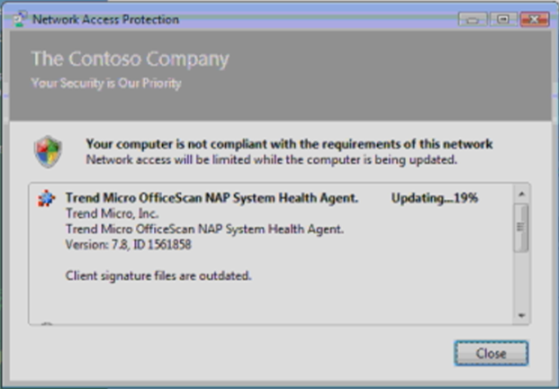Webcast: Enabling Trusted Communications and Health Policy Enforcement with NAP
in Microsoft on Nap
Gene Ferioli, a Program Manager with the Customer Connection Team at Microsoft did a webcast back in September on NAP, which is available for download. I’ve just gotten around watching this webcast and it weighs in at 1h 8m. Here’s my rough notes on what it covers:
- NAP Overview and Architecture
- Four Pillars of Network Access Protection:
- Policy Validation
- Network Restriction
- Remediation
- Ongoing Compliance
- NAP is a platform that Microsoft providing APIs for third party developers to extend and plug into
- Health System Components
- System Health Agents
- System Health Validators
- System Health Servers
- Remediation Servers
- Linux and Mac NAP clients are in the works, to be developed by third party developers
- Network access devices (end-points that control access to the network):
- Wired 802.1x - switch
- Wireless 802.1x - access point
- IPSec - Health Registration Authority
- DHCP - DHCP server
- VPN - VPN server
- A health certificate is short lived so that system health can be re-evaluated. This re-evaluation occurs at 80% of the certificate life time + a random offset
- Multiple certificate authorities can be specified for health certificates
- You can configure NAP to remediate and/or report but not restrict
- Based on customer feedback, Microsoft is building a Heath Registration Authority (HRA) locator service, so that the client can locate the closest HRA. Much like clients locating the closest domain controller
- Things to understand about NAP:
- NAP cannot protect the network from malicious users
- NAP is designed at the health overlay to the network security systems
- NAP is dependent on its enforcement mechanisms
- IPSec, VPN, 802.1x and DHCP need to be designed and deployed as security solutions in their own right prior to overlaying
- Start planning today - are all switches capable of 802.1x (if you plan to use 802.1x). If you are implementing VoIP, are the phone using the same physical connections or VLANs?
- Covers Cisco NAC, Microsoft NAP interoperability
- Windows Vista only scenario
- Describes the NAP/NAC interoperability architecture and process
- NAP client APIs on Windows Vista support NAC (no seperate NAC client required)
- Deploy Cisco EAP modules through Windows Update/WSUS
- You can deploy NAC today and add NAP once Longhorn Server is released
- The NAP team is working on a provisioning service for a guest access scenarios (hotels, airport, contractors etc)
Here’s a screen grab of the Trend Micro System Health Agent auto-remediating the local anti-virus to make the client machine healthy (click for a larger view):

